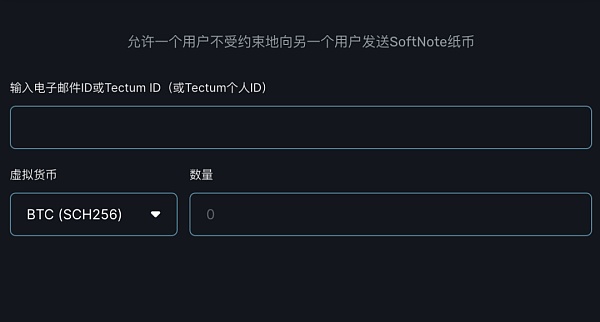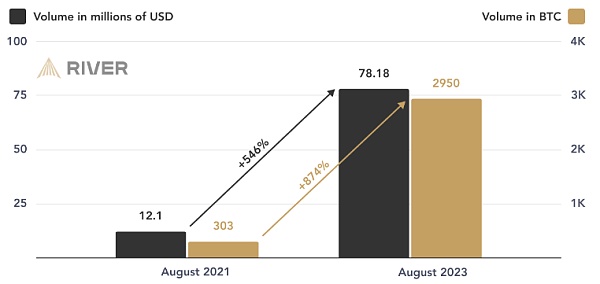Since the development of blockchain, public chain developers have been working towards more efficient smart contract public chains, from Avanlanche's subnet to NEAR's sharding, and then to Solana’s PoS+PoH, etc. The smart contract public chain is the "operating system" in the Web3 field, and countless applications can be developed on it to form an overall "public chain ecosystem."
However, the functions of the blockchain technology itself do not seem to have been fully exploited. It can also play a role in many fields such as data and payment, which cannot be supported by existing technologies. function. Tectum is an attempt to fully tap the value of the "blockchain" itself. Its core goal is to serve as a "covering layer" for other public chains or projects, using the advantage of settlement speed to improve the efficiency of the transaction itself.
How does Tectum achieve "million-level TPS"?
Tectum stated on its official website that its TPS can reach 1 million transactions per second. This number may not have been stress tested yet, but Tectum's website The circuit architecture and mechanism design do have the potential to greatly improve the speed of blockchain transaction confirmation.
Lightweight mainnet architecture
Tectum block The chain includes components such as the master node pool, nodes and decentralized database. The master node pool will randomly select an "election node". The election node proposes transactions to be packaged into blocks and creates a series of blocks, generating "transaction + last block hash" information. The master node pool will send the transactions selected by the "election nodes" to independent nodes. The nodes will also generate a large number of blocks according to "one transaction, one block", and will add the transactions to the block together with the hash of the last block. Send back to the master node pool. When the last block hash generated by each independent node matches the information generated by the election node, all blocks will be submitted to the chain at the same time.
In this process, the "electoral node" essentially defines the block to be created, and after creation, it is handed over to the master node pool for arbitration. If the master node believes that the way the "electoral node" creates the block is valid, it will send the same transaction to other nodes to confirm that the final generated block information is consistent to ensure that the "electoral node" did not cheat on the block information.
Tectum says that one of its network cycles lasts 200 milliseconds, which means that it only takes 200 milliseconds for Tectum to generate a series of blocks. The Tectum network has been designed for "high speed" from the beginning: Tectum's main network will only store hashes and not data. Data is stored in the lowest network, and Tectum's decentralized database will map these data for easy indexing. . In this way, large amounts of transaction data are not on the Tectum mainnet, but are still immediately verifiable and publicly accessible within the network protocol and through blockchain explorers, providing different levels of accessibility to different transaction-related modules.
Proof-of-Utility
The core of Tectum's proof-of-practicality consensus mechanism lies in "verifiable randomness": more than five new masternodes are elected per second, and a dynamic node rating system is used to ensure compliance with chain governance rules, which means that misbehaving nodes Will be punished quickly and removed. Each node creates its own series of blocks, which are verified by master nodes in a way that maximizes speed, allowing the network to scale as computing resources increase. Practicality is demonstrated by not wasting resources on inefficient and energy-intensive computations.
Tectum's block size is only 120 bytes, and each block contains only one transaction. Additionally, Tectum utilizes special hash algorithms within its blockchain architecture to maintain integrity and consensus while minimizing the size and number of data packets that need to be transmitted over the network.
STAR/RING communication structure
Tectum's official website documentation It is shown in that there are two basic communication structures. The star structure transmits information from node 1 to node 2, and node 2 transmits it to the node cluster; the ring structure has nodes 1 to 4 in sequence. Spread, 1 and 4 are connected end to end. Tectum combines the two, where "elector nodes" distribute data to master nodes in a ring structure, and the master nodes then distribute data to their respective clusters of nominal nodes in a star structure. Clusters of independent nodes are connected to each other using a ring structure.
"Overlay": Bitcoin can be traded without confirmation from the Bitcoin mainnet
Attempts to improve the efficiency of Bitcoin transfers have been carried out for many years. From side chains to lightning networks, the basic idea of these solutions is still that the object of transfer is still Bitcoin itself, based on the product Softnote developed by Tectum This provides a new idea: What if you just transfer "notes" representing the number of Bitcoins?
Softnote is a new tool based on the Tectum blockchain that enables fast transactions without any fees. Users can mint Softnote bills by spending Tectum's native token, TET, after creating a Softnote wallet generated using a Bitcoin node.
After the minting is completed, the user can fill the bill with Bitcoin to "activate" the bill, and then the bill represents the purchasing power of the filled Bitcoin amount and High-speed transactions can be performed on the Tectum network, and bill collection charges are subject to a fee of up to 1%.
Additionally, bill payments and transfers can even be done via email and are not recorded on Bitcoin’s blockchain. As a result, SoftNote enables zero-fee, instant transactions with complete privacy. As the payee, after receiving the bill, you can unlock the Bitcoin on the bill. This design is similar to the Lightning Network in some aspects, in that it saves the cost of the transaction itself, which is only incurred during settlement, but Tectum's solution is superior in cost and speed.

Of course, Tectum's solution can not only be used on Bitcoin, it currently also supports USDT and TRX. In the future, with the expectation that cryptocurrencies, especially Bitcoin and stablecoins, will be used for payment on a large scale, Tectum's solution The solution can achieve a cost-free and high-speed payment experience, with great room for imagination.
Beyond cryptocurrency itself"No-cost" payment
The current Web3 market attaches great importance to the development of native applications, and the inherent characteristics of blockchain technology suitable for payment and transactions seem to be increasingly ignored. But the good thing is that many traditional financial institutions are beginning to pay more and more attention to the advantages brought by technology itself. JPMorgan Chase is trying to tokenize assets to improve settlement efficiency, PayPal is issuing US dollar stable coins, and Ripple continues to work hard in the payment field. Including the chairman of the U.S. Securities and Exchange Commission, he also expressed his recognition that distributed ledgers represented by blockchain technology are indeed an innovation.
Looking at the current market, there are not many outstanding projects in this field. The reason is obvious. It is just payment and empowerment of the token itself. It requires an extremely long time span, and it is difficult to use native tokens to generate high positive externalities.
Tectum has made bold innovations in the structure of the blockchain itself. Its design itself is not prepared for smart contracts, but focuses on transactions. Confirmation speed, and storing a large amount of data related to transactions on the underlying network, making the settlement layer as lightweight as possible, and using the method of locking assets and generating "notes" to map assets on Tectum, using Tectum High-speed network enables real-time payment.
Data shows that in August 2023, the number of transactions on the Bitcoin Lightning Network exceeded 6.6 million in a single month, and the total transaction volume is expected to be close to 80 million US dollars. This data is only a lower limit, as private Lightning Network transactions and transactions involving only two parties cannot be counted. In addition, as of September 2023, the actual number of users on the Lightning Network may exceed 1 million.

In fact, in many small countries where fiat currencies fluctuate far more than cryptocurrencies, the Lightning Network has become a daily payment method. However, Lightning Network payments are limited to Bitcoin, and USDT has long stopped supporting Omni. If Tectum can be widely accepted and become an alternative to Bitcoin or even stablecoin payments, based on the transaction confirmation speed of the Tectum network, it will be even more It can exceed existing limitations and support larger concurrency requirements.
The current market value of Ripple tokens, the leader of the payment network, exceeds US$30 billion, while Tectum only slightly exceeds US$200 million, although it may still take a long time to catch up with the leader. Time will come, but with the help of the "east wind" of the Bitcoin ecosystem, Tectum's value discovery may continue.
DePIN's "Saviour"
Besides payment , Tectum’s features can also be used in areas such as DePIN where the current infrastructure is not very complete.
DePIN is a much-mentioned IoT track. Due to its extremely high speed requirements for data transmission and transaction confirmation, it is currently difficult to have a native solution. The Web3 infrastructure provides support, and Tectum, as a "covering layer", can have higher compatibility with other blockchains, thereby assisting the DePIN network in data transmission and confirmation, empowering the "blockchain + entity" that has long been forgotten by the market. Industry" track. This track, which was ridiculed as a "fantasy" due to its poor infrastructure, may become an important business area for Web3 in the future.
Currently, Helium Mobile uses the Solana network as the underlying blockchain infrastructure because Solana's transaction confirmation speed ranks among the top among smart contract public chains. However, a considerable part of the transactions packaged in Solana network blocks are not actual user transaction data, but are related to consensus, and IoT data is still challenging for its actual transaction confirmation speed.
Tectum provides a data layer solution for DePIN. Related projects can still be built on existing smart contracts, and the data does not necessarily need to be "off-chain". ” for transmission and confirmation, and “on-chain solutions” can also be used to solve the stubborn problem of trustlessness under the premise of decentralization.
Tectum has previously launched the pledge function of native tokens. According to wallet data, the current pledge amount of Tectum’s native token TET has reached approximately 645,000. According to the current token The value of the pledge has exceeded US$20 million based on currency price calculations. Tectum will gradually grow into a decentralized network and provide more value to pledgers and other network participants as the ecosystem gradually expands.
 JinseFinance
JinseFinance







